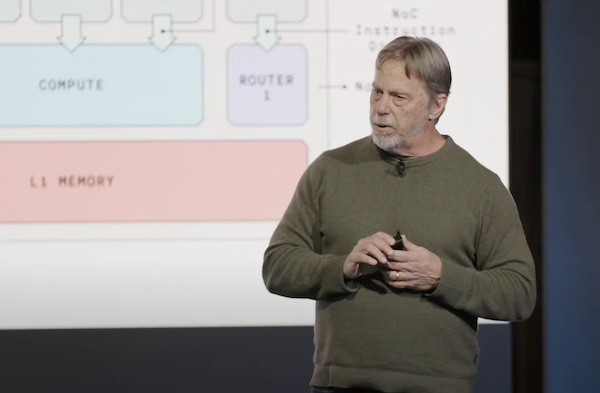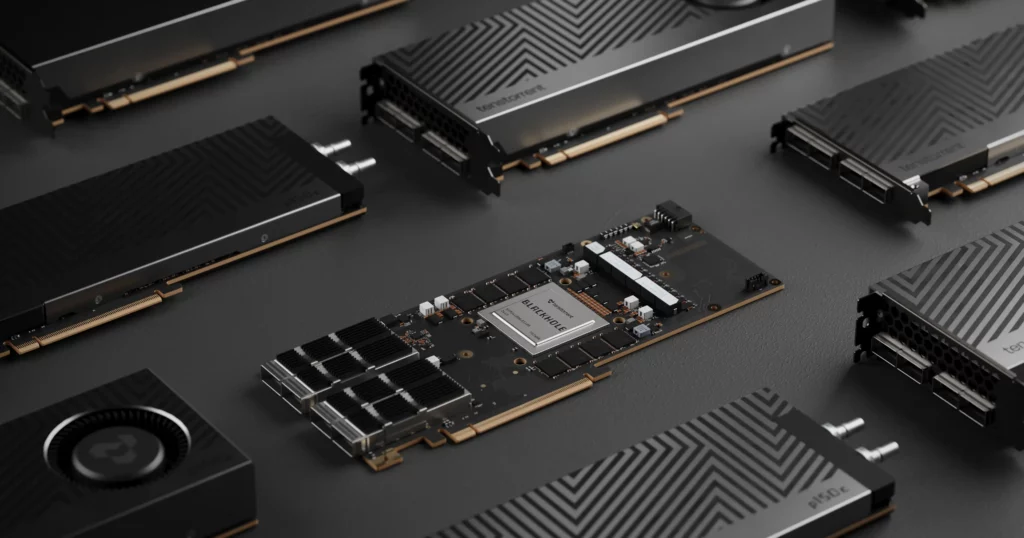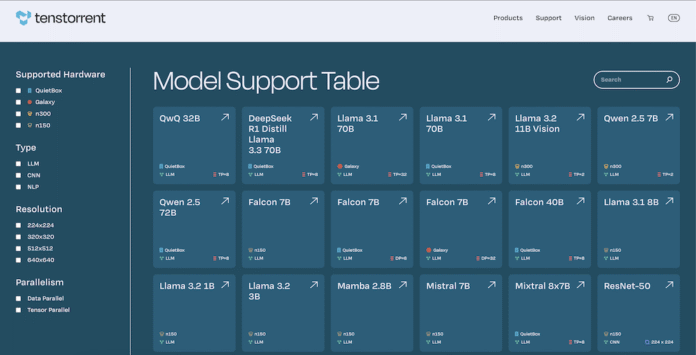When Jim Keller’s team finally pressed the “publish” button on GitHub and made their entire AI tool‑chain public, the room at Tenstorrent Developer Day cracked into spontaneous applause . It wasn’t just a symbolic gesture. It set the tone for an event that recast AI infrastructure as an open playground rather than an expensive gated resort.
A crisis of access
Top‑tier GPU clusters now clear $250 million in bill of materials, driving smaller labs and start‑ups to the cloud—if they can even find capacity. Proprietary firmware and NDAs keep the stack opaque, stalling research that veers off the beaten CUDA path.

Keller framed the problem bluntly on stage: “Everybody who focuses on just one thing is going to fail…AI wants to go from small to big.” His answer is to ship everything—from licensable IP blocks to full racks—and let developers choose their own entry point .
Black Hole: a different kind of AI chip
Tenstorrent’s new Black Hole processor starts with 140 tensor cores (up from 80 in the last generation) . Each core carries five “baby” RISC‑V controllers for fine‑grained scheduling, while 16 larger SiFive X280 RISC‑V cores handle general compute tasks.
Instead of exotic HBM, the chip leans on 32 GB of commodity GDDR6 delivering 512 GB/s, backed by 210 MB on‑chip SRAM to cut latency . Ten 400 GbE links stitch boards into clusters, quadrupling the previous generation’s bandwidth . Net result: up to 3× the performance of its predecessor without the sticker shock .
Hardware you can actually buy (and lift)
- P100A PCIe card — 120 tensor cores, 28 GB memory, actively cooled, $999
- P150A/B — adds scale‑out ports and 32 GB memory for $1,399
- Quiet Box developer workstation — up to four Black Hole chips, silent liquid cooling, $11,999
- Galaxy 6U server — 32 chips, best compute‑per‑dollar in its class, shipping worldwide today

Image source: https://tenstorrent.com/hardware/blackhole
With web checkout and no minimum order, a graduate student can now spin up local Llama‑70B inference or fine‑tuning on the same silicon Tenstorrent sells to clouds.
RISC‑V everywhere—including the data‑center CPU
Inside Black Hole the tiny RISC‑V controllers hum quietly, but the headline belongs to Ascalon—Tenstorrent’s eight‑wide, out‑of‑order RISC‑V cluster aimed squarely at x86‑class servers .
The company is already licensing early RTL to lead customers and plans annual performance jumps. By betting on an open ISA from microcontroller through data‑center core, Tenstorrent invites customers to extend the instruction set rather than wait on a GPU roadmap.
A four‑layer stack you can fork
Tenstorrent didn’t just post tarballs; the full chain—LLK, Metal, TTNN and the Forge compiler—updates in the open each night. Performance dashboards, CI logs and even bug backlogs are visible to anyone with a browser .
Got a kernel idea? Submit a pull request and claim a $500–$50k bounty . The company’s Discord and new Developer Hub keep the conversation flowing 24/7 .
Why the model matters
Tenstorrent is building a flywheel that closed competitors can’t easily copy. By shipping silicon that’s affordable, hackable and licensed as IP, it lowers the barrier for every cohort—from chip‑design houses embedding Tensix tiles, to indie researchers plugging a card into a spare PCIe slot.
Every line of code upstreamed to Forge or TTNN lifts performance for the whole community, and every Galaxy rack deployed on‑prem pushes Ethernet‑based AI fabrics into mainstream practice.
Watch‑points
Execution risk remains—software polish must reach CUDA levels, and scaling demos to thousands of chips are still on the public roadmap . Yet Keller’s team has already raised roughly $1 billion to fund that journey , and the cadence of open commits offers a real‑time window on progress.
Get involved with Tenstorrent!
Replay the keynotes, grab the slide deck, and decide where you fit in:
- Developer Day recap: https://tenstorrent.com/en/developer-day
- Docs, repos, and bounty board: https://tenstorrent.com/developers
If the last decade of AI belonged to closed GPU giants, Tenstorrent just handed the community a set of keys—and a $999 entry pass. It’s time to take a drive.


